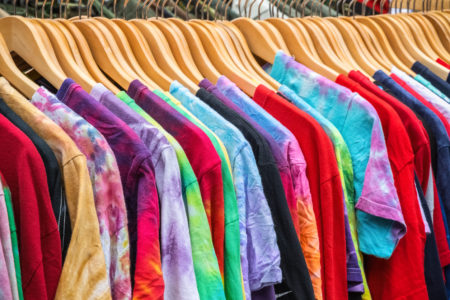
Share On Social!
Like many large-scale manufactured products in today’s society, the shirts, sweaters, and pants found on the racks contain harmful chemicals – some of which can cause breakouts and rashes.
One primary health concern, allergic contact dermatitis, forms on one’s body when their skin comes in contact with harmful substances. Worse, it can have a delayed effect, and now researchers suggest that consumers wash all newly-purchased clothing before wearing.
“What’s maddening for the consumer is that you buy a shirt that says ‘100% cotton,’ and yet you’re given no information about any of the chemicals or additives that have been used,” David Andrews, a senior scientist who has investigated chemicals in clothing with the Environmental Working Group, told TIME.
What Chemicals are Used?
The most significant substance of concern is the colorants manufacturers use, according to Dr. Susan Nedorost, a professor of dermatology at Case Western Reserve University and director of the dermatitis program at University Hospitals Cleveland Medical Center.
“When we see allergic contact dermatitis from clothing, it’s usually from disperse dyes,” Nedorost said. “If a patient comes in and has a rash around the back of the neck and along their sides around their armpits, the first question I ask is what they wear when they work out.”
Moreover, a 2014 study showed connections between other chemicals in clothing, such as quinoline and cancer development.
“In a person wearing garments containing quinoline and its derivatives, the skin is exposed to a large surface area of clothing containing a compound that can possibly be absorbed through the skin,” researchers state. “Quinoline can cause skin irritation and is classified by the US Environmental Protection Agency as a group 2B compound, a probable human carcinogen.”
Chemicals like these can also cause the development of Toxicant-Induced Loss of Tolerance (TILT), a sickness that can result in numerous adverse consequences.
Earlier this month, members of Delta Airlines’ in-flight staff sued the company over connections between sickness and clothing. Flight attendants claim that company-issued uniforms are causing numerous health impacts, including rashes, hair loss, vomiting, and migraines.
Dr. Nedorost, who is an expert in this field, also commented in this issue — supporting the possibility of a connection between sickness and the flight attendants’ uniforms.
“Sometimes uniforms are made to be distributed only in the United States, where there’s no regulation,” Nedorost told Vox. “And if you’re an employer, you want your employees to look quite crisp—meaning wrinkle-free—and the formaldehyde-releasing textile resins are less expensive.”
How Does This Impact Latinos?
America is becoming increasingly multicultural.
Latinos are a purchasing powerhouse in America — and companies are implementing strategies to target that demographic, according to Forbes.
Latinas, specifically, are making waves in the clothing industry. Companies, such as JC Penny and Target, are shifting their approaches in hopes of capturing this demographic.
“Latinas play a very important role,” Roberto Siewczynski, executive vice president of the marketing agency Catapultvista, which focuses on the Latino market in America, told NBC. [Companies] are embedding Hispanic thinking into their go-to-market strategy — all the way from product design to store layout,” he said. “This is a very fashion-conscious consumer; you cannot disregard this purchasing power.”
If the Latino market continues to grow, and decision-makers don’t take the necessary steps to implement chemical-safety regulation, minorities will face significant impacts.
Internationally, countries such as France and Sweden are taking steps to ban over 1,000 harmful substances in clothing.
For those wanting to ensure safety, researchers recommend washing all clothing items before wearing them.
Find out more about TILT, and discover if you are experiencing the sickness by taking the QEESI and BREESI assessments — then share that information with your doctor to discuss how to create chemically-safe environments in the home.
TAKE BREESI & QEESI!
Editor’s Note: This article is part of a collaboration between Salud America! and the Hoffman Toxicant-Induced Loss of Tolerance (TILT) program at UT Health- San Antonio. To find out if you are TILTed due to exposure to everyday foods, chemicals, or drugs, take a self-assessment or learn more about TILT.
Explore More:
Chemical & Toxic ExposureBy The Numbers
1
Quick Survey
Can help you find out how chemically sensitive you are



